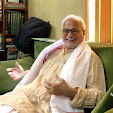www.auroville.org › contents
Mar 12, 2015 - One of the greatest challenges of our times is how to view and to handle diversity — religious, cultural, gender, or whatever. Are our differences a potential source of conflict or of strength? Should we seek to protect, for example, endangered languages and cultures or accept that the future lies in the increasing homogenization of humanity?
These are some of the questions addressed in Richard Hartz’s new book The Clasp of Civilizations: Globalization and Religion in a Multicultural World. The title, of course, refers .to Samuel Huntingdon’s influential book, The Clash of Civilizations and the Remaking of World Order, in which Huntingdon argues that future conflicts would most likely occur because of the “clash” of the values of different civilizations, noting that the most likely conflicts would be between the West and Islam or China.
Hartz believes that Huntingdon overstates the distinctiveness of different cultures, noting that there is no such thing as cultural “purity” and that all cultures influence and are influenced by the contact with others. Historically, these cross-influences have often been to the benefit of both. Hence the “clasp” of civilizations.
Today, however, under the pressure of globalization the future of some cultures may be in doubt. Predictions of the effect of globalization upon cultures fall into three groups: either it will have no effect upon cultures because the differences that distinguish them are too strong; or it will lead to convergence and homogenization; or it will result in “hybridization”, where different cultures act upon each other to generate new forms.
Francis Fukuyama, Huntingdon’s former student, argued in his book The End of History and the Last Man that Western liberal democracy is possibly the end-point of humanity’s social and political evolution. In a fascinating chapter on the first Parliament of Religions, held in Chicago in 1893, Hartz examines this “suprematist” tendency as it relates to religion. He shows how the organizers of the Parliament hoped to use it as a display case for the supremacy of Christianity over all other world religions. But this was stymied by the charismatic Swami Vivekananda, who mounted a vigorous defence of religious pluralism:
Much has been said of the common ground of religious unity. . . . But if anyone here hopes that this unity will come by the triumph of any one of the religions and the destruction of the others, to him I say, “Brother, yours is an impossible hope”. . . .
Vivekenanda, writes Hartz, “was a breaker of barriers and had contempt for narrow and exclusive identities”. He was also a fine example of a strong rational intellect informed by a supra-rational vision. “The way to intuition is through reason,” he wrote.
Sri Aurobindo, of course, was another such figure, and he is often quoted in this book. In one chapter, Hartz compares the insights of Sri Aurobindo with those of the American philosopher Reinhold Niebuhr, who wrote so incisively about the dark side of the “American Dream”. While Niebuhr was a Protestant theologian, like Sri Aurobindo he applied the insights of an ancient spiritual tradition to the problems of the modern world. Both agreed upon seeing the human ego as a false centre of existence and of the need to cultivate serenity or equanimity as a first step for spiritual progress. And both foresaw the possibility of a future human unity being founded upon a spiritual basis.
In the final chapter, “Intuition and the Limits of Reason”, Hartz examines the influence upon science of, respectively, Platonic and Aristotelian thought. Whereas the latter emphasizes empirical analysis, the former sees intuition as a critical factor in scientific discovery. Hartz notes that while empirical analysis has played a key role historically in freeing science from the grip of superstition, many of the most important recent discoveries — particularly in the new physics — stem from a process akin to intuition.
Hartz is not interested in elevating one culture above another. He argues that the future of humanity may not depend upon the triumph of one civilization over another but upon the real-ization by the “rational” West that reason has its limits, and that it must be informed by those intuitive processes and insights which are more characteristic of the civilizations of the East.
This is a very timely and well-argued book, a major contribution to the debate about multiculturalism, globalization and the future of civilizations. If I have one small criticism, it is that sometimes there is needless repetition — as in some chapters relating to the Parliament of Religions — and this betrays the fact that the book is actually a collection of distinct talks. No doubt, some astute editing will remedy this in the second edition. (Alan, Auroville Today, March 2015, No. 308)
Update: May 10, 2017
A very important article written on Feb 17, 2017 by Raman Reddy has been posted two months back at
...
Tweets by @SavitriEraParty
Compulsion of some to grab Sri Aurobindo as Hindutva icon. Savitri Era Open Forum: Half baked scholars take the cake https://t.co/Md5EAMYqdH
Aurora Mirabilis: for some time meditation and Pranam receded into the background https://t.co/ZfqKWuf5Mx #SriAurobindo #MirraAlfassa
Savitri Era Learning Forum: Nehru spiritual figure and Sri Aurobindo secular icon https://t.co/BGkRSaj142 #Hindutva #Consciousness #Integral
[Nehru is elevated into a spiritual figure and Sri Aurobindo converted into a secular icon, shows fundamental flaws] https://t.co/OKvdbBbCHB
[difference between traditional Yogas & Sri Aurobindo’s Yoga of transformation mostly irrelevant in actual practice] https://t.co/qto7jLLL8q
